On our homestead, we have more than one chicken coop. But it took us some time to figure out the most workable plans. We want to help you know what your chicken coop should include.
We have something like 200 chickens on the farm, and so we have a 100 year old chicken coop and a second, more modern home for our flock.
Both chicken coop designs are great, and serve their purpose (keeping our chicken flock warm and dry) well.
In this article you will learn:
- What your chicken coop should include
- Big mistakes to avoid (that can cost your hens their health!)
- Why roosting bars are critical
- How to deter mice and predators
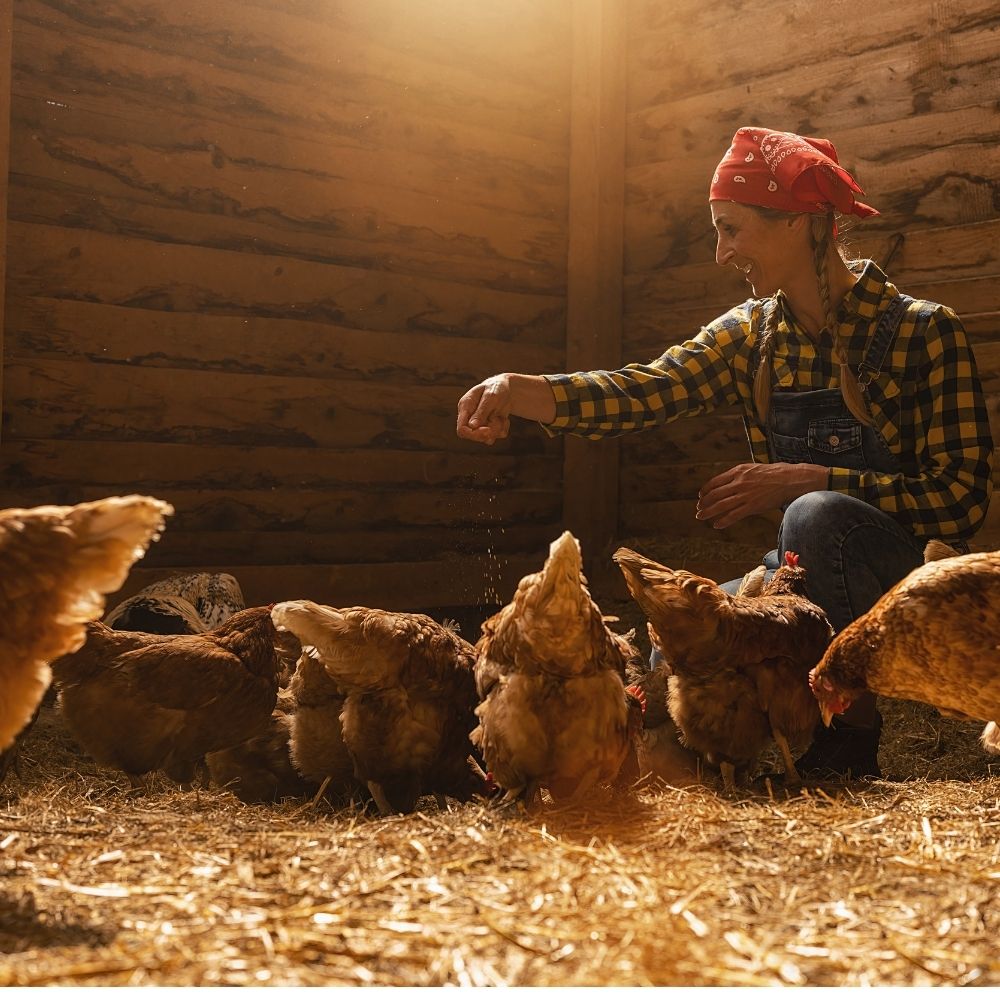
Table of Contents (Quickly Jump To Information)
Chicken Coop Overview
If you are getting backyard chickens you need a coop. Or if you’re like me and have chickens but always want more, then you might need a second chicken coop. We’ll cover what your coop should include and what it shouldn’t. We will also talk about what you can include that might be a little bit fun and also functional.
The chicken coop you will keep your chickens in is perhaps one of the most important decisions you’ll make for them. And when it comes to coops, you might see all sorts of really cute ones on Pinterest. While they’re great, and if you want one, by all means go grab one, but cute isn’t necessary.
When it comes to chicken coops, above everything else, it should keep your flock out of the elements and provide shelter. It needs to keep them warm and dry during inclement weather and provide shade in the summer. It should also provide them with protection from predators. (Here are more practical tips on keeping your chickens safe from predators).
Whether your chicken coop design is picture perfect or an old shed on your property, if it keeps them safe your coop is perfectly fine. It’s also fine to add some fun elements and make it a pretty part of your home and landscaping.
If you’re a crafty person with a good sense of aesthetics (or if you live in a restricted neighborhood), dressing up your chicken coop might also be a good idea. Read more about raising chickens with neighbors.
There are, however, other things to take into consideration. Things such as space requirements, proper ventilation, cleanliness, chicken nesting boxes, and chicken roost ideas.
Anatomy of a Chicken Coop
Like I said, when it comes to coops, even the simplest structures will make a perfectly fine home for your chickens. As far as housing goes chickens are simple creatures and prefer to spend their days foraging and dust-bathing. They will even do this in inclement weather, rather than staying indoors. We love and recommend this product for dust bathing: Bathing Dust With Herbs.
That being said, there are some features that your chicken coop must have in order to be adequate housing for your flock.
What Your Chicken Coop Should Include – Guidelines (Quick List)
- It should be a solid structure that’s not easy to blow over
- You should have adequate space for the number of chickens in the coop
- Your coop needs to have a solid roof to keep your chickens dry
- Make sure there is good ventilation
- Include chicken nesting boxes and an easy way to collect eggs
- There needs to be a place to roost (chickens needs roosting bars)
- It should have space for a chicken feeder and waterer.
So, let’s talk about each of these in more detail.
Space Requirements
So, let’s first talk about space requirements. Whether you build your own chicken coop or purchase one already made, the space requirements are the same. Having enough space in the coop is crucial for the health of your chickens. It will reduce stress and negative behaviors.
It can be difficult and time-consuming to stop bad behaviors or prevent upper respiratory infections once they develop. Preventing these things from the outset can save time and effort.
What are the minimum requirements for space in a chicken coop? If you free-range your chickens then you should provide 4 square feet per chicken in their coop.
For birds that will remain cooped most of the day or all the time, then 10 square feet of space is necessary. Of course, providing an additional run is ideal as well. We have two different chicken runs on our farm, and they’re slightly different.
Our first run, which is attached to our main chicken coop, is very large. We enclosed the space using hog paneling, which they can’t get through because they are large chickens.
The second chicken run is made of smaller chain link fencing. I should mention that we haven’t had many predator issues with our adult chickens. However, with our young ones, possums and hawks are a problem. However, our adult chickens are primarily threatened by dogs.
We used chain link for the second run because we found a pre-built dog run at a great price. It’s definitely spacious enough for the chickens.
Coop Space Tips
We have installed chicken wire on the lower 2 feet of the run to prevent our pigs from damaging it (when they occasionally get loose). Additionally, we had an unfortunate incident where some unidentified animal ripped open a hole in the bottom of the run. As a safety measure, we added 2-inch wire to the bottom 2 feet to prevent any further incidents and ensure the animals are kept safe.
The chicken run is protected by a 2-inch chicken wire on top, mainly to keep predators out and also to prevent the chickens from flying out. Even though the run is 8 feet high, some of my chickens are excellent fliers and tend to lay eggs in various parts of the property.
So, your run, if you don’t let your chickens free range, should complement your coop and give them extra room to spread their wings, and should be safe for your particular area. Chickens that are confined and don’t have enough space might start to develop habits like egg eating or pecking at each other. They can also develop nutritional problems.
Good Ventilation
First on our list is good ventilation, and this is really important for a few reasons. When it comes to ventilation, windows are a good thing to include, or your coop can have an open doorway that allows air circulation and fresh air.
Chickens poop everywhere, and after a time, this manure builds up, and it’s much worse when the ventilation isn’t good.
Chickens have a delicate upper respiratory system, and they’re susceptible to things like upper respiratory infections, so too much ammonia in their coop can harm your chickens.
Good ventilation and cleaning the chicken coop regularly will help prevent upper respiratory infections. Our coops have windows, and one of our coops has a 4-inch gap between the roof and the walls to allow for a cross breeze. There’s an overhang so the inside of the coop doesn’t get wet inside when it rains.
Of course, if it’s raining out (or very cold), you might want to close these windows and doors. Some sort of door is necessary, but overall, making sure there are windows in your coop will help promote good ventilation.
It’s important to keep in mind that windows and doors in the chicken coop allow sunlight to enter, which can provide your chickens with their daily requirement of Vitamin D. Vitamin D is crucial for various functions, but most importantly, it aids in calcium absorption, promoting healthy eggshells and strong bones.
So, windows and good ventilation are both good things for your chicken coop design.
Easy To Clean
Next, your chicken coop should be built so that it’s easy to clean, and this is part of good ventilation. It should have an opening large enough for an adult human to fit through in order to thoroughly clean it (read more about cleaning your chicken coop like a pro).
I see coops for sale all the time that look adorable but I can’t really see a good way for a person to get inside and pull out soiled bedding and manure and replace it with new, clean material.
Similarly, your run should be large enough so you can fit inside it. In addition to the cleanliness issue, what happens if there’s a sick or injured bird in the coop or run? How will you get it out if you can’t fit in there?
Predator Proof
Your coop should also be predator-proof, and we’ve touched a bit on this, but let’s look into it further. Your chicken coop should protect your chickens not just from predators that might wander into the coop, but also those above and those that might dig under your chicken wire and into your coop.
Click here to learn more about making your flock predator proof.
To ensure your chickens are protected, it’s important to keep predators out of your coop. One effective way to do this is by using hardware cloth on the run and over any gaps, such as the 4-inch gap mentioned earlier. It’s best to use half-inch hardware cloth because it’s more difficult for predators to penetrate.
To prevent predators from digging under your coop, you can use hardware cloth on the ground outside. You can either bury the cloth 4 to 12 inches deep into the ground or lay it flat 12 inches out from your coop. This will keep your chickens safe and secure.
In addition to predators, your chicken coop should be as secure as possible from mice and rats that are attracted by the feed and droppings. Here are more tips on keeping mice out of the chicken coop.
Coop flooring is one way to keep them out. However, if you don’t have one, then burying a hardware cloth fence down into the ground and about 12-inches all around the coop will help deter them.
Remember that if mice and rats really want into your coop, they can chew through the wood. If that’s happening, consider placing hardware cloth about 12-inches high around the bottom of your coop.
Feeders and Waterers
Your coop should include a place for feeders and waterers, and what that will look like depends on what your feeders are like. Some people use PVC feeders while others use ground feeders. Still other people like to hang their feeders and waterers.
So, it’s really up to you and what works best in your coop. You should also be able to easily access the feeders and waterers.
- Here’s a great DIY Chicken Waterer Plan for you.
- Here is a recipe for Homemade Organic Chicken Feed.
Nesting Boxes
When designing a chicken coop, it’s important to consider the chicken nesting boxes. A good rule of thumb is to have one nesting box per five hens. However, it’s always better to have more than that, and it doesn’t hurt to have too many. Since laying hens usually prefer to lay in the same nest you don’t need to worry about having a box for each chicken.
If you have 5 chickens, then 3 nesting boxes will suffice. You can add herbs and hay to the nesting boxes so your chickens have a pleasant place to lay their eggs. Mint is one option, and rodents hate mint, so it has dual purpose. Oregano, which has strong antibacterial properties, is another good option.
Nesting Box Tips
I prefer hay over straw in nesting boxes, and my chickens seem to prefer as well. Hay is generally softer and smells sweeter, as long as it isn’t moldy.
When it comes to choosing chicken nesting boxes, there are many options available. Essentially, anything that provides a quiet and dark place for the hens to lay eggs will suffice. These nesting boxes can be made from a variety of materials such as 5-gallon tubs or baskets. It is important to choose a nesting box that both you and your chickens like. It should also be one that can be easily cleaned when necessary.
Nesting boxes should be in a dark corner of the coop or you can shield them with a curtain. Chickens like to lay eggs in dark places. This is a natural thing, and when a hen lays, she’s at her most vulnerable.
Often times, if you place your nesting boxes in the “wrong area” according to your hens, they’ll choose to lay elsewhere. Hens can be very particular!
If you have mites and lice in your nesting boxes, or want to prevent them, you can use this product in the boxes.
Egg Collection
Your chicken coop should also have a way for you to easily collect the eggs. One of our coops is large enough for us to just walk into, while another coop is smaller. We use a window box to collect the eggs in that coop.
If your coop has a way for you to collect eggs from the outside, so much the better. But the last thing you want is to have to crawl through dirt and manure to get your eggs.
Roosting
The last thing you should think about for your coop is a chicken roost area. Chickens like to roost. It’s how they sleep and get away from predators. It also lets them stay warm in cool weather because they can group together.
If your chicken coop doesn’t have a place for them to roost, you can make one for them out of pretty much anything. Just make sure it is wide enough for them. We’ve used branches, old broom handles, 2×4 studs, wooden dowels, or pretty much anything else you find around your property as long as it’s safe.
If you do use an old broom or mop handle, be sure to screw it down so it can’t move, otherwise your chickens will have a hard time balancing. Similarly, branches make great, natural roosts, but make sure they’re solid so your chickens won’t fall off.
Roosts should be between two and four inches wide but the bottom line here is to not make them so wide that your chicken can’t drop their poop below them since chickens and all birds poop whenever their bodies need to since they don’t have bladders.
Another good idea is to place a removable tray under your chicken roosts to make removing manure easier and cleaner. This might not logistically work for you, but making sure you can easily remove manure from the coop means a cleaner, more sanitary coop. It’s also an easy way to gather manure for your compost bin.
Read all about Roosting Bars and Perches here: Chicken Perches – All About Roosting Rituals.
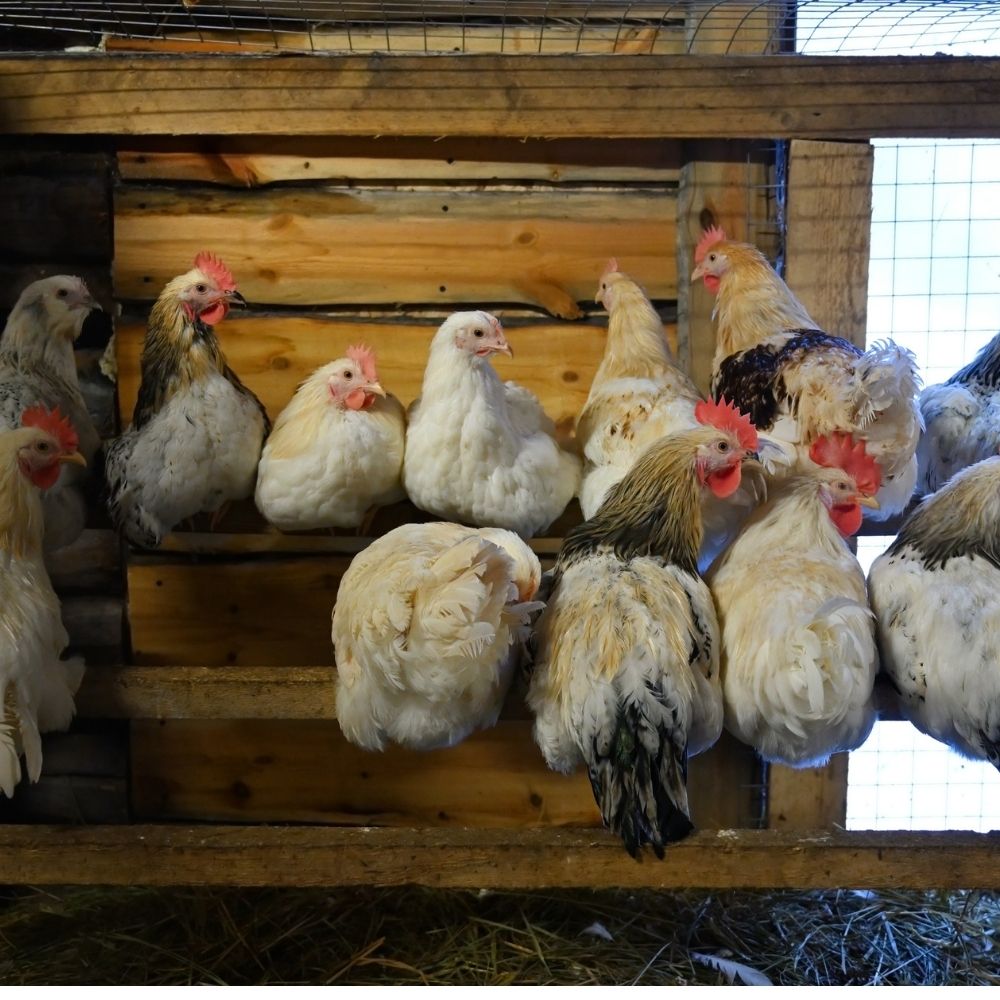
Final Thoughts on Chicken Coop Designs
Whether you decide to purchase a pre-made chicken coop or build one yourself, it is important to ensure that the structure meets the basic needs and essentials of your chickens. In our farm, we house one of our flocks in a 100-year-old shed which provides ample roofing and ventilation, as well as designated areas for them to roost.
For another flock, we built a traditional chicken coop that looks quite different. It still keeps them warm and has great ventilation. Our chickens seem quite happy in it.
When it comes to coops, you can invest as much or as little as you like, as long as it meets the basic requirements we outlined above.
If you’re interested in building your own chicken coop, I have free instructions on my blog, click here for some DIY Chicken Tractor Plans that you can make even if you are broke. The plans are detailed, and you’ll learn how to make a chicken coop in my step-by-step system with photos. I’ve also got this list of 55 DIY Chicken Coop Plans for you to check out.
Thanks for listening to this episode of What The Cluck?! about chicken coops, and I’ll see you next time!
Maat van Uitert is a backyard chicken and sustainable living expert. She is also the author of Chickens: Naturally Raising A Sustainable Flock, which was a best seller in it’s Amazon category. Maat has been featured on NBC, CBS, AOL Finance, Community Chickens, the Huffington Post, Chickens magazine, Backyard Poultry, and Countryside Magazine. She lives on her farm in Southeast Missouri with her husband, two children, and about a million chickens and ducks. You can follow Maat on Facebook here and Instagram here.


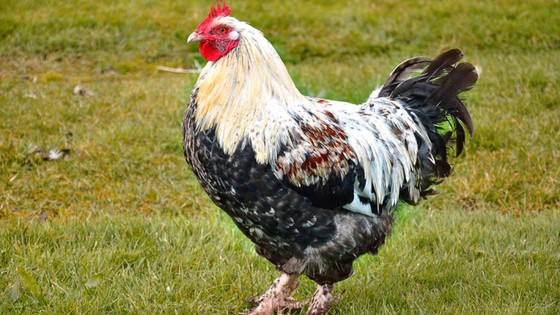

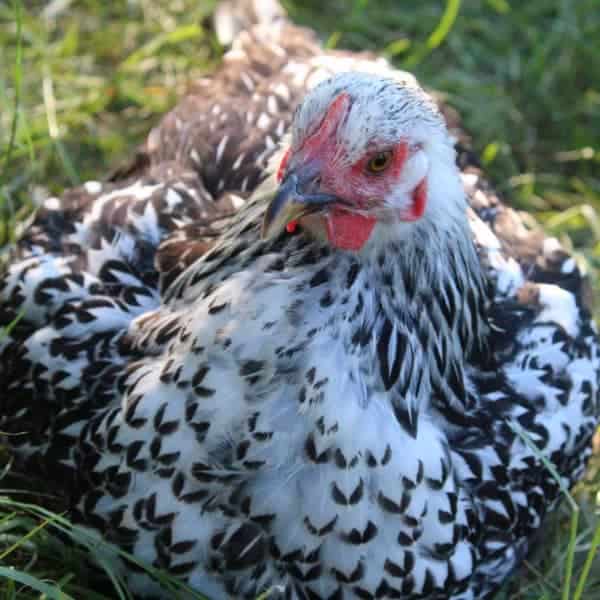

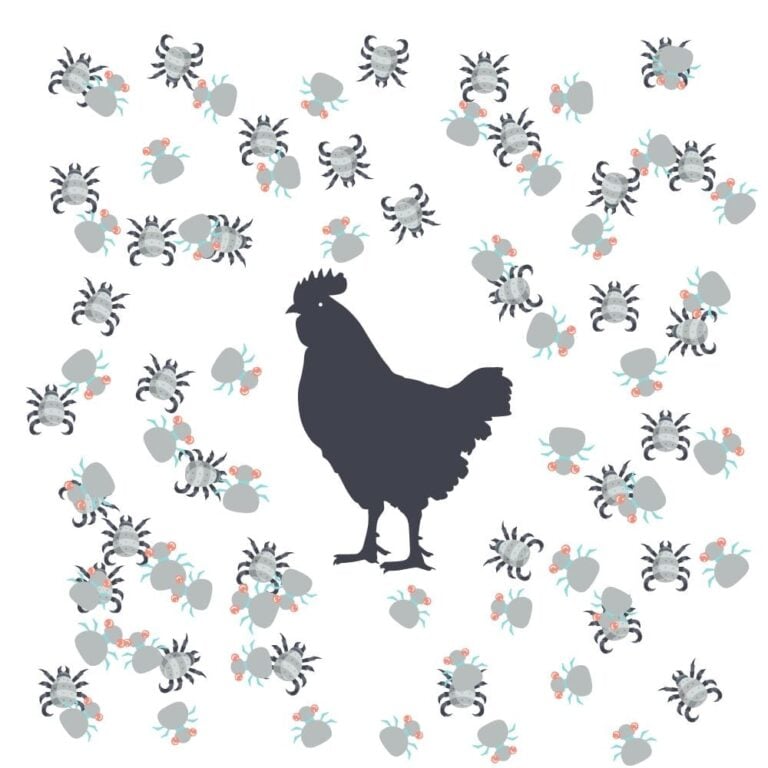
Thank you for so much information, you have answered my questions, I will send pics once I finish my coup. Thanks again,
We’re in the process of building our coop. We’re using found materials and donated wood, thus far the coop itself has cost us nothing but labor. We will be purchasing base paint and chicken wire. I’ll be sure and post photos when the weather clears up here in central VA.
Hi Kathie – I would love to see your coop when it’s done! Love hearing that you’ve been using found materials to build the coop. I’m sure your hens will love it!
Im working on building a coop out of three quarter inch pvc and recycled supplys so can pick it up and move it so far ive only spent 30 dollars and have the front back roof and nest boxes done
Sounds great!
Our coop is mostly built of found items and plywood left over from my hubby so work. It’s the cutest little red barn ever!!! I put cinder blocks under the walls off the run and the night coop is 3′ off the ground so the space under it is great and dry for dust bathing. ( thou wishin I had put access to clean under there!! in future I may figure a way to have a drop door so I can get under easier to rake it out). Our night coop is 3′ x5′ and the run is 3’x 15′ . We have 4 hens and a roo. Thought the coop opens into a fenced garden and I free range them when I’m home in the afternoons. Biggest problem we have is dealing with bears! Lost two hens to a bear early in the fall and now have ” unwelcome mats” stratigicly placed around the coop. Bear hasn’t been back since encountering that unpleasantness ( it’s a piece of plywood 2’x4′ with screws and nails driven through) I love having chickens and my neighbours love hearing my roo:).. Good thing too as tchnically not supposed to have on within city limits ;(
Love your informative articles and podcasts:)
I’d post a pic but I’m not sure how:)
I enjoyed listening to this, thanks for the tips.
When you that rodents hate ment and rosemary, did you mean that we put the herbs in the coop or as in essential oils?
You can use either. Essential oils will be more concentrated, of course.
I didn’t catch that you can use rosemary. Is this a good deterrent for mice?
We have a new coop! The chickens seem very happy! At night when I go to close the door to their coop they are all congregated at the door, sitting on the edge. The door is a sliding door, they have a ramp leading up to the coop. In the morning, after being physically put in the coop and door closed, they are settled on their roosts when I go to let them out. Any ideas why they are behaving like this?
Do you have to separate a mother hen and her new babies from the rest of the chickens or will be mother take care of them?
You mentioned “I prefer hay over straw in nesting boxes” Which kind of hay do you use? We have oat and alfalfa available. The oat is definitely cheaper. We also have grass clippings available. Just curious what you find works best. Thanks!
Oat hay would work! We have easy access to straw so we use that too.